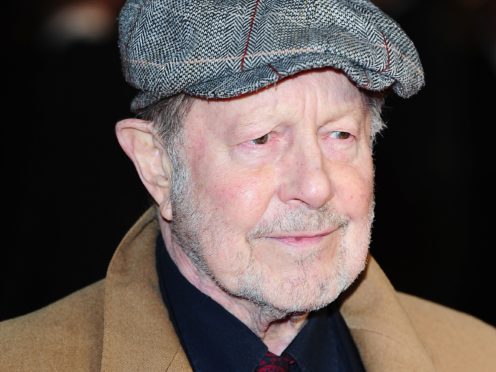British film director Nicolas Roeg, who was behind cult classic The Man Who Fell To Earth and the critically-acclaimed Don’t Look Now, has died aged 90.
Nicolas Jack Roeg was born in London on August 15, 1928, to Jack Nicolas and Mabel Gertrude Roeg – and entered the film industry as a tea boy at Marylebone Studios after completing his national service in 1947.
He managed to work his way up to camera operator on films such as The Trials Of Oscar Wilde and The Sundowners in 1960, and worked as a cinematographer on Lawrence of Arabia.
Farewell to the extraordinary cinematic talent, director Nicolas Roeg. His films hypnotized me for years and still continue to intrigue. Along with classics like Performance & Walkabout, I could watch Don't Look Now on a loop & never tire of its intricacies. A master of the art. pic.twitter.com/fXB7GPwOL9
— edgarwright (@edgarwright) November 24, 2018
It was through his work as a cinematographer that Roeg managed to gather critical attention, including on François Truffaut’s Fahrenheit 451 in 1965.
Roeg moved into direction in 1968, working with the writer Donald Cammell on Performance, which saw The Rolling Stones’ Mick Jagger playing an eccentric and reclusive pop star who gives refuge to gangster-on-the-run James Fox.
The film was delayed for two years, but was eventually released in 1970, by which time Roeg was working on his first solo direction – Walkabout.
RIP to Nicolas Roeg, a pioneering force of cinema who created some of the most affecting moments of beauty, terror and sadness ever seen. A true great if ever there was one. pic.twitter.com/SRuvHhC0jP
— BFI (@BFI) November 24, 2018
Roeg’s biggest success came with Don’t Look Now in 1973, which achieved notoriety with a controversial sex scene between stars Julie Christie and Donald Sutherland.
Its intimacy not only caused problems with censors, but sparked rumours Sutherland and Christie had actually been having sex.
But the supernatural tale based on a Daphne du Maurier short story is now widely recognised as a key work of horror cinema, with film director Danny Boyle citing Roeg as a key influence to his own work.
The late David Bowie starred in Roeg’s 1976 cult classic The Man Who Fell To Earth as an alien who crashes on Earth seeking a way to save his home planet from extinction.
Just heard another great storyteller, the inimitable Nicolas Roeg left us today. What an incredible body of work he’s left us with!All my love to his family.Thank you for making so many brave choices, & giving this strange little lad in pajamas an ongoing love of filmmaking. pic.twitter.com/QVg2znq3Rs
— Duncan Jones (@ManMadeMoon) November 24, 2018
It was Bowie’s first major film role and is one of Roeg’s most celebrated works.
His 1980 psychological thriller Bad Timing – starring Art Garfunkel, Harvey Keitel and Roeg’s second wife Theresa Russell – caused considerable controversy, with an executive of its own British distributor The Rank Organisation famously branding it “a sick film made by sick people for sick people”.
Roeg directed the 1990 screen adaptation of Roald Dahl’s The Witches, working with Muppet-maestro Jim Henson.
The director’s last feature film was Puffball in 2007, a supernatural drama starring Kelly Reilly and Miranda Richardson.
Roeg also directed a number of TV series in the late 1980s and early 90s, including a televised adaption of Joseph Conrad’s Heart Of Darkness in 1994.
In 1999, the British Film Institute acknowledged Roeg’s importance in the industry by naming Don’t Look Now and Performance as the 8th and 48th greatest British films of all time in its Top 100 poll.
Roeg married actress Susan Stephen in 1957 and had four children, before they split in 1997.
He married Russell in 1982 and had two children before remarrying a third time after their divorce to actress Harriet Harper in 2005.
